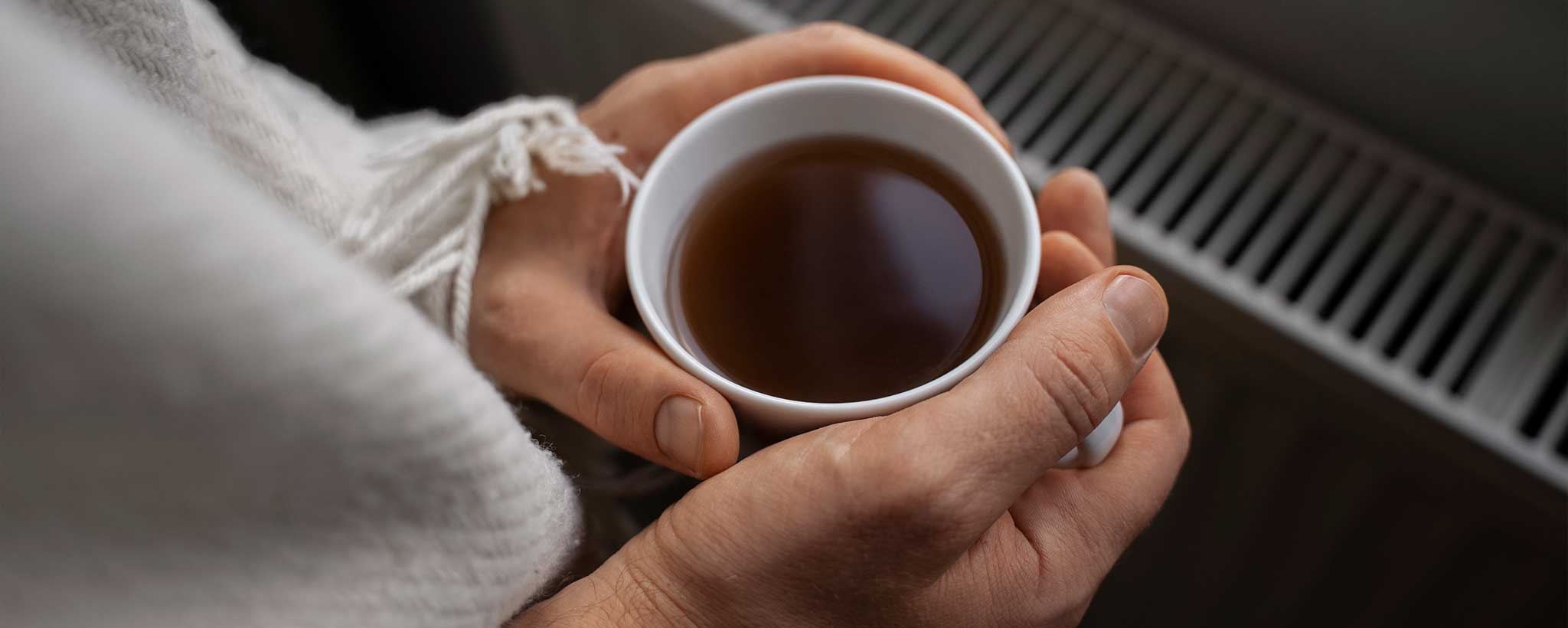A comprehensive breakdown of common headaches. Gain a deeper understanding of everything from brain tumor fears to lifestyle influences.
A Common Source of Worry
Migraines and headaches are frustrating conditions that affect many individuals. From mild annoyances to debilitating episodes, headaches often interfere with daily activities. Many over-the-counter pain relievers are available. But when they provide no relief or headaches are chronic, they warrant medical evaluation.
Cardiologist Can Rule Out Aneurysm
A brain aneurysm is a bulge within a blood vessel in the brain. If it leaks or ruptures, causing bleeding in the brain, it becomes a life-threatening hemorrhagic stroke. Though common, most small brain aneurysms are not serious and have no symptoms. A ruptured aneurysm is a very serious condition, typically causing a severe headache that requires immediate medical attention.
Brain Tumors Are Unlikely Culprits
One of the first things people fear when headaches arise is a brain tumor. The likelihood of developing a brain tumor is less than 1% throughout a lifetime. The nascent probability represents approximately 25,000 people in the United States during 2023. To rule out the small percentage of people with such, a medical professional may request a brain scan, typically when there are specific symptoms.
A reason brain tumors rank high on people’s concerns may be due to sensationalism in medical dramas. It is statistically likely that you know someone who has suffered from one if you have over a hundred acquaintances. Take comfort in the fact that there is a 99% percent chance that your headache is not a cancerous brain tumor.
🤕 If you have an acute headache and want to try something without a lot of reading, try caffeine. Either drink a bottle of cola or a cup of coffee. Caffeine helps reduce inflammation and boosts the effectiveness of NSAIDs. Excedrin Migraine contains 65 mg of caffeine, 250 mg of acetaminophen, and 250 mg of aspirin for symbiotic relief.
Blood pressure that is too high or too low can cause headaches. A medical office routinely checks for this during visits. If you have a blood pressure cuff at home, it is useful to check your own if you are experiencing frequent discomfort.
Rebound headaches, which are withdrawal reactions, can occur from prolonged pain reliever use. Particularly when exceeding the recommended dosage, caffeine makes rebound headaches more likely.
Dental Issues is a Surprising Link
Tooth decay can expose nerves within the gum. This makes them sensitive to hot or cold liquids and pressure when biting. By performing special tests and examining X-rays, dentists can evaluate the need for a protective root crown and/or root canal. This procedure involves the removal of the nerve root and reconstruction of the damaged tooth, which can alleviate the associated headaches.
Unraveling the Mystery of Migraines
Migraines are a specific type of headache often recognizable by sharp pain on one side of the head. You should know that there are several types of migraines with differing triggers. The most common is migraine without aura, which lacks warning signals like visual anomalies or light sensitivity. A neurologist can help diagnose and prescribe treatment for frequent migraines.
- Abdominal migraine
- Chronic migraine
- Hemiplegic migraine
- Kaleidoscopic migraine
- Menstrual migraine
- Migraine with aura
- Migraine without aura
- Migraine with brainstem aura
- Vertiginous migraine
- Vestibular migraine
Food allergies can trigger a migraine. A damp environment with mildew affects some people. The weather’s biometric pressure triggers the migraines of other people.
Understanding Different Headache Types
There are several classifications for headaches with specific characteristics. Here are some common types:
- Tension headaches: This is often described as a band-like pressure around the head.
- Post-traumatic headaches: These occur after experiencing head trauma and can manifest in the frontal lobe, temples, or the back of the neck.
- Cluster headaches: These typically cause intense pain behind the eyes and are known for their cyclical patterns.
- Sinus headaches: Inflammation and congestion in the sinuses can lead to headaches located behind the nose.
- Allergy headaches: Foods like aged cheese, artificial sweeteners, and chocolate can trigger some migraines.
The pain of uncommon thunderclap headaches peaks within 60 seconds, lasting at least 5 minutes. Though uncommon, they can warn of potentially life-threatening conditions such as bleeding in and around the brain. Ice pick headaches present as sharp, stabbing pains with no underlying cause. They typically last only a few seconds.
Your Body’s Pain Alerts and Suppression
The human body has a remarkable system of natural pain relievers that help alert us to pain and suppress it to promote healing and protect us from harm. This intricate process involves the following mechanisms:
- Nociceptors: Specialized nerve endings called nociceptors are scattered throughout the body. They are sensitive to various stimuli, such as temperature, pressure, and chemical changes, that may indicate potential tissue damage or injury.
- Pain Signal Transmission: Tissue damage or injury activates nociceptors, sending electrical signals along nerve fibers to the spinal cord and brain. These signals are known as pain impulses.
- Spinal Cord Processing: The pain impulses reach the spinal cord, where they undergo initial processing. Here, the brain may receive immediate feedback to initiate reflex actions, such as pulling away from a painful stimulus.
- Brain Perception: The pain signals then continue to the brain for further processing. The brain assesses the intensity, location, and nature of the pain.
- Endorphin Release: In response to pain, the body releases natural pain-relieving chemicals called endorphins. These bind to opioid receptors in the brain and spinal cord. This blocks the pain signals to reduce pain perception.
- Endogenous Opioids: Besides endorphins, the body produces other endogenous opioids. Enkephalins and dynorphins also contribute to pain relief by interacting with opioid receptors.
- Descending Pain Inhibition: The brain can also send signals back down the spinal cord to inhibit the transmission of pain signals. This helps suppress pain and modulate its intensity.
- Distraction and Coping: Engage in activities or practices that distract from the pain or promote relaxation. This includes deep breathing, meditation, or listening to music, which can trigger the release of endorphins and provide natural pain relief.
- Inflammation Response: Inflammatory processes that occur at the site of injury can contribute to pain sensation. The body’s immune response aims to heal the damaged tissues, and as the healing progresses, the pain typically subsides.
Overall, the human body’s natural pain-relieving mechanisms, such as endorphin release, descending pain inhibition, and inflammation response, work together to alert us to pain, initiate protective actions, and ultimately suppress pain to aid in recovery and maintain overall well-being.
The Impact of Pain Relievers
Nonsteroidal anti-inflammatory drugs (NSAIDs) and prescription opioids can both enhance and override natural pain relievers in the body but in different ways.

NSAIDs, such as ibuprofen and naproxen, work by inhibiting the production of prostaglandins, which are chemicals that promote inflammation, pain, and fever. By reducing inflammation, NSAIDs indirectly enhance the body’s natural pain-relieving mechanisms.
Inflammation can sensitize pain receptors and amplify the pain signal. NSAIDs help to lower the overall pain intensity, making it easier for the body’s natural pain relievers, like endorphins, to have a more significant impact.
Over-the-counter pain relievers are generally safe when following manufacturer directions. However, prolonged use can damage the digestive tract, and cause heartburn, and fluid retention. As a general rule, minimize use to 10 times per month unless otherwise prescribed by your physician.
Prescription opioids, such as morphine, oxycodone, and hydrocodone, interact with opioid receptors in the brain and spinal cord, producing powerful pain relief. They directly override natural pain relievers by binding to these receptors and effectively blocking the transmission of pain signals. Opioids reduce the brain’s perception of pain, making the pain less noticeable or even temporarily numbing it. This effect can be particularly potent.
Opioids come with a risk of tolerance, dependence, and addiction. Long-term opioid use often leads to a decreased response to the medication, requiring higher doses for the same pain relief. It can also disrupt the body’s natural pain-modulating systems. Additionally, opioids can cause side effects like sedation, constipation, and respiratory depression, which can be dangerous if not used as prescribed.
In contrast, NSAIDs are generally safer for short-term use and are suitable for managing inflammation-related pain, such as that caused by injuries, arthritis, or menstrual cramps. They do not cause the same level of dependence or addiction as opioids.
The Effects of Nutrition and Stress
Various lifestyle factors can contribute to headaches. Too much sugar, insufficient hydration, overuse of alcohol, excessive caffeine, or specific vitamin deficiencies can all cause headaches. Interestingly, even the overuse of headache medication can lead to rebound headaches. This is why experts recommend a medical evaluation if headaches persist for more than ten days with home treatment.
Stress is another significant contributor to headaches. There are many causes of stress today. Financial obligations, the death of loved ones, a troubled conscience, and worry about health conditions trigger headaches.
Regular exercise, fresh air, proper nutrition, and adequate rest can elevate stress headaches. If you feel overwhelmed by the number of tasks before you, make a list of what needs to be done. Prioritize the most important ones and work on them one at a time. Ask for assistance if necessary.
Heating pads and cold packs can help reduce headache pain. Heat increases the blood flow to the brain while cold from an insulated ice pack decreases the blood going to the brain. Experiment with both to see if either provides relief.
Most headaches are minor annoyances that resolve on their own through the body’s natural defense mechanism. Over-the-counter medications can enhance recovery by suppressing inflammation. For persistent headaches, see a doctor. If prescription medication does not bring adequate relief, contact your physician again.
To support the writing of scholarly articles about neurology, ClinicalPosters sells human anatomy charts, scientific posters, and other products online. You may sponsor specific articles or remit a small donation.
ClinicalPosters sells human anatomy charts, scientific posters, and other products online to offset expense of the writing useful articles about neurology. Slide extra posters into DeuPair Frames without removing from the wall.
Show your support by donating, shopping for ClinicalPins, or leaving an encouraging comment to keep the research going.
To support the writing of useful articles about neurology, ClinicalPosters sells human anatomy charts, scientific posters, and other products online. You may sponsor specific articles or remit a small donation.
ClinicalPosters sells human anatomy charts, scientific posters, and other products online to offset expense of the writing useful articles about neurology. Slide extra posters into DeuPair Frames without removing from the wall.
ClinicalPosters sells human anatomy charts, scientific posters, and other products online. You may remit a small donation.
You can support the writing of useful articles about neurology by sponsoring specific articles or remitting a small donation.






 Romance & Health Intertwine. Fall in love with a captivating romance miniseries that explores the essence of well-being. Become a ClinicalNovellas library member for heartwarming tales.
Romance & Health Intertwine. Fall in love with a captivating romance miniseries that explores the essence of well-being. Become a ClinicalNovellas library member for heartwarming tales.




